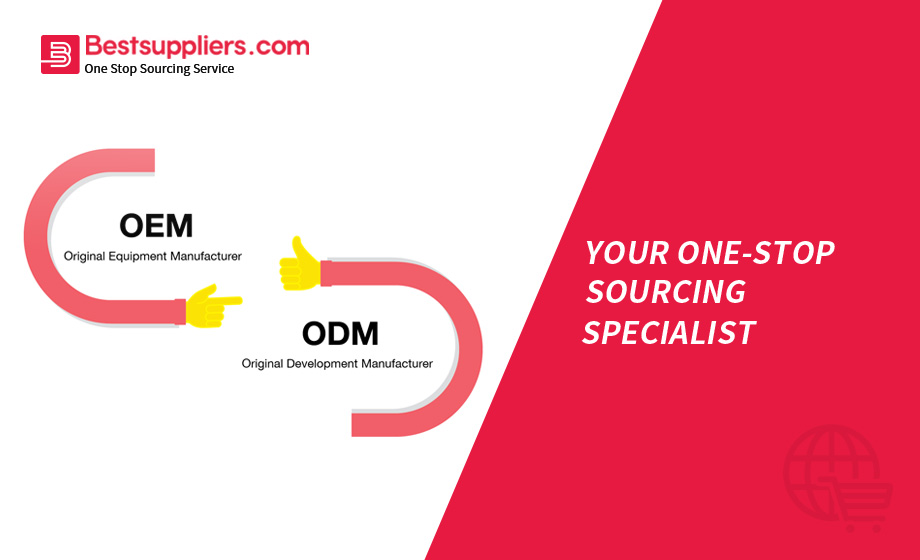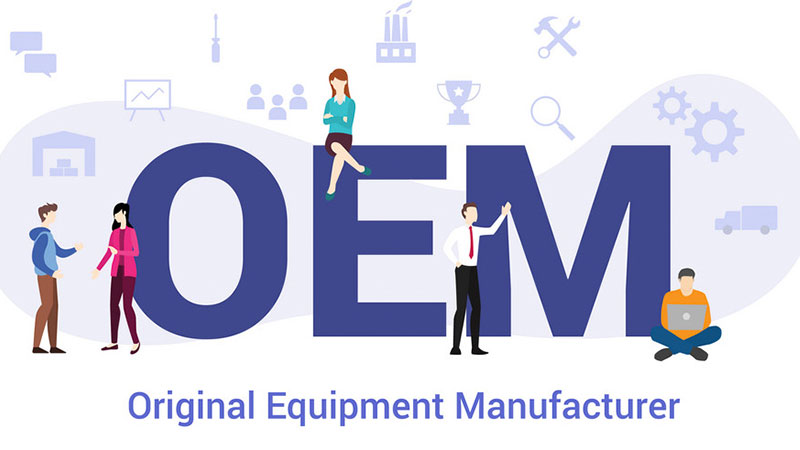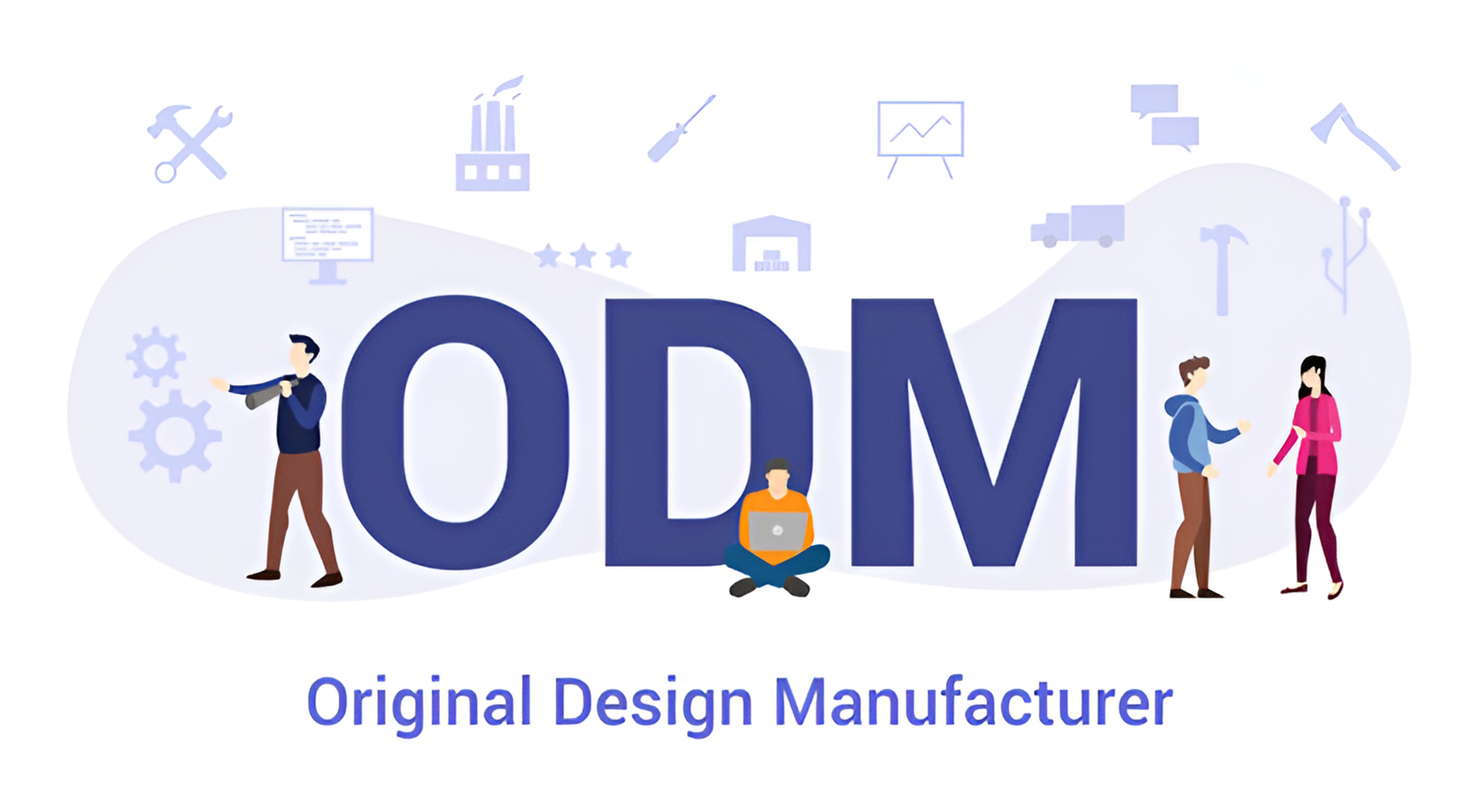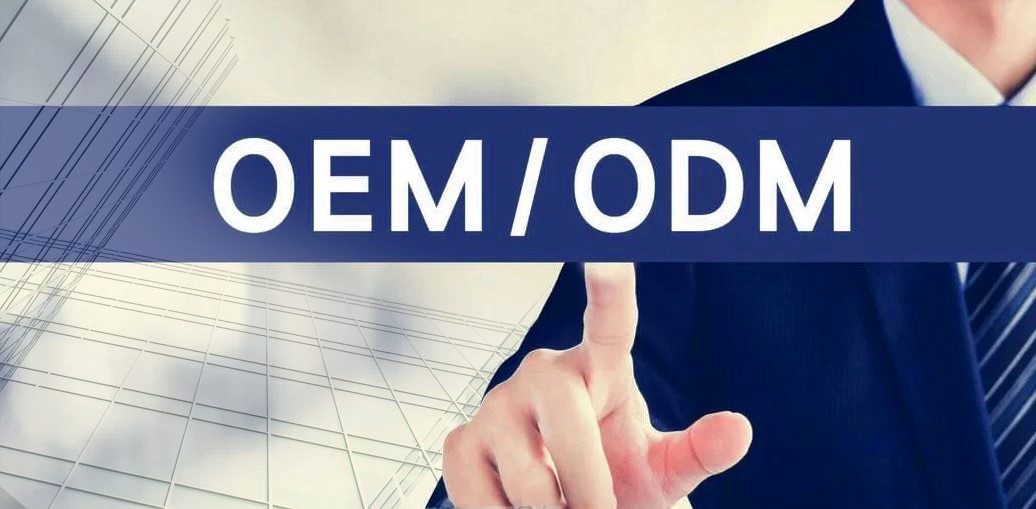Difference between ODM and OEM

Introduction
In the complex world of manufacturing, the acronyms OEM (Original Equipment Manufacturer) and ODM (Original Design Manufacturer) frequently emerge, delineating two distinct approaches to production. These concepts wield significant influence, shaping industries from electronics to fashion. In this exploration of OEM and ODM, we aim to illuminate their importance in modern manufacturing and dissect the key differences that set them apart.
Definition of OEM and ODM
Our journey begins by unraveling the fundamental definitions of OEM and ODM.
- OEM: which stands for Original Equipment Manufacturer, refers to a manufacturing process in which a company produces goods based on designs and specifications provided by another entity. In this arrangement, the OEM company is responsible for the assembly and production of products, often using pre-existing templates and designs.
- ODM: on the other hand, is an abbreviation for Original Design Manufacturer. In this manufacturing model, the ODM company not only manufactures the product but also plays a pivotal role in its design and development. It offers a comprehensive solution for clients seeking customized products, including involvement in the design phase.
Key Differences Between OEM and ODM in Manufacturing
In the intricate landscape of manufacturing, two acronyms, OEM (Original Equipment Manufacturer) and ODM (Original Design Manufacturer), delineate distinct approaches to product creation. These approaches hold profound differences that impact various aspects of the manufacturing process. To gain a comprehensive understanding of OEM and ODM, let's delve into their key distinctions.
1. Ownership of Product Design
At the core of the OEM vs. ODM distinction lies the ownership of product design.
- OEM: Procuring Pre-Designed Products
- In the realm of OEM, companies relinquish the design process to external entities. OEM manufacturers produce goods based on designs and specifications provided by clients. The ownership of the product design firmly rests with the client, who acts as the orchestrator of the production process. This model is ideal for companies seeking efficient production without the intricacies of design.
- ODM: Customization and Design of Products
- Conversely, ODM ventures into the terrain of customization and design. In ODM partnerships, the manufacturer assumes dual roles, overseeing both the design and manufacturing phases. Clients provide input or guidelines, allowing the manufacturer to craft products tailored to their specific needs. The essence of ODM thrives on innovation, as it offers a platform for clients to create unique, market-distinctive products.
2. Control over the Manufacturing Process
The level of control over the manufacturing process serves as another point of differentiation between OEM and ODM.
OEM: Limited Control
OEM partnerships often involve a reduced level of control for clients. They entrust the OEM manufacturer with the production process, relying on their expertise and infrastructure. While this approach can be efficient, it may result in limited influence over quality control, production timelines, and other critical aspects of manufacturing.
ODM: Enhanced Control
In contrast, ODM collaborations empower clients with a higher degree of control. Clients have a say in the entire manufacturing journey, from the inception of design to the execution of production. This heightened control allows for meticulous oversight, ensuring that products adhere to specific branding and quality standards. ODM clients actively shape the manufacturing narrative.
3. Branding and Product Ownership
The branding and ownership of products represent pivotal differences between OEM and ODM.
OEM: Manufacturer's Branding
In OEM arrangements, products often bear the manufacturer's branding. While clients can make certain customizations, the manufacturer's identity remains prominent. This dynamic can impact brand recognition and customer loyalty, as the manufacturer's reputation becomes intertwined with the product.
ODM: Client's Branding
Conversely, ODM clients enjoy the privilege of placing their branding front and center. Products are meticulously tailored to align seamlessly with the client's brand identity. This level of customization ensures that the client's brand takes center stage in the eyes of consumers, fostering brand consistency and recognition.
4. Flexibility in Product Customization
The degree of product customization represents a significant distinction between OEM and ODM.
OEM: Limited Customization Options
OEM partnerships offer limited customization options. Clients can tweak existing products to a certain extent, such as selecting colors or packaging. However, they are constrained by pre-designed templates and specifications. This model is suitable when time-to-market is a critical factor.
ODM: Extensive Customization Possibilities
Conversely, ODM collaborations provide clients with extensive customization possibilities. Clients can shape products from the ground up, tailoring every aspect to meet their unique requirements and market demands. This high level of flexibility enables clients to innovate and differentiate their offerings effectively.

Pros and Cons of OEM Manufacturing
In the complex world of manufacturing, Original Equipment Manufacturing (OEM) represents a strategic approach with a range of benefits and its share of drawbacks. To navigate this field effectively, it's crucial to grasp both the advantages and limitations that OEM manufacturing offers. In this article, we delve into the intricacies of OEM manufacturing, exploring its pros and cons in the ever-evolving landscape of industry and production.
1. Advantages of OEM Manufacturing
Cost-Efficiency
One of the primary advantages of OEM manufacturing is its inherent cost-effectiveness. Companies that opt for OEM partnerships can leverage the economies of scale provided by specialized manufacturers. This leads to reduced production costs, resulting in competitive pricing for end consumers. Cost efficiency is particularly valuable in industries where price competitiveness is a driving force.
Speed to Market
In today's fast-paced business environment, speed to market can be a critical factor in a product's success. OEM collaborations significantly expedite the production process. Since OEM manufacturers specialize in particular components or products, they possess the expertise and infrastructure to streamline production swiftly. This agility enables companies to introduce new products to the market rapidly, gaining a competitive edge.
Established Expertise
OEM manufacturers are domain experts in their respective fields. They have honed their craft over time, perfecting production processes and ensuring the highest quality standards. By partnering with OEMs, companies gain access to this wealth of specialized knowledge and experience. This expertise contributes to the production of high-quality products, fostering trust and credibility among consumers.
Reduced Risk and Responsibility for Product Design
In OEM collaborations, companies offload the intricate task of product design to external entities. This alleviates the burden of design responsibilities and the associated risks. Companies can focus on their core competencies, leaving the intricacies of design and production to OEM experts. This reduced risk and responsibility can be a strategic advantage, allowing companies to concentrate on marketing, distribution, and customer service.
2. Disadvantages of OEM Manufacturing
Limited Customization
Despite its cost-effectiveness, OEM manufacturing does come with limitations, most notably in the realm of customization. Companies that choose the OEM route are often constrained by pre-existing templates and designs. Customization options are limited to specific parameters, such as color variations or minor modifications. This constraint can be a drawback for companies seeking highly specialized or unique products.
Less Control Over Production
OEM collaborations often entail relinquishing a degree of control over the production process. Companies entrust OEM manufacturers with the intricacies of production, relying on their expertise and infrastructure. While this approach can be efficient, it may result in limited influence over quality control, production timelines, and other critical aspects of manufacturing.
Limited Brand Recognition
In the world of OEM manufacturing, products often bear the manufacturer's branding rather than the client's. This can impact brand recognition and customer loyalty, as the manufacturer's reputation becomes intertwined with the product. Clients may find it challenging to establish their brand distinctiveness in the market when their products don't prominently feature their branding.
Potential for Supplier Dependence
Overreliance on OEM manufacturers can pose a potential risk for companies. If a company becomes too dependent on a single supplier, it may face vulnerabilities if that supplier encounters production issues, financial difficulties, or changes in business priorities. Diversifying supplier relationships and maintaining a degree of in-house expertise can mitigate this risk.
In conclusion, OEM manufacturing offers a range of advantages, including cost-efficiency, speed to market, access to expertise, and reduced design responsibilities. However, it also comes with drawbacks, such as limited customization, reduced control over production, limited brand recognition, and the potential for supplier dependence. To make informed decisions, companies must carefully weigh these pros and cons in the context of their specific manufacturing needs and business objectives.

Pros and Cons of ODM Manufacturing
In modern manufacturing, there are both good and bad sides to Original Design Manufacturing (ODM). To understand it better, we need to look at its advantages and disadvantages. Let's explore what makes ODM manufacturing unique and what challenges it might pose in the ever-changing world of industry and innovation.
1. Advantages of ODM Manufacturing
Product Customization: Tailored for You
In ODM manufacturing, the power of customization takes center stage. These partnerships enable companies to create products that align precisely with their vision and what the market demands. This customization goes beyond surface-level changes; it delves deep into the product's core design, functionality, and look. The result is a range of unique, market-disrupting products that attract consumers seeking innovation and distinctiveness.
Brand Control and Recognition: Shaping Your Brand
In the highly competitive business world, brand recognition is crucial. ODM collaborations provide a platform for companies to shape their brand identity precisely. Products are carefully tailored to align seamlessly with the client's brand values, creating a unified and compelling brand story. This level of control ensures that every product that enters the market reinforces brand recognition and builds customer loyalty.
Reduced Design Responsibilities: Sharing the Load
One of the most significant advantages of ODM manufacturing is the reduced burden of design responsibilities. Companies can trust ODM experts with the complexities of product design, freeing up valuable resources and time. This sharing of design responsibilities reduces the risks associated with intricate designs, allowing companies to focus on their core strengths, such as marketing, distribution, and customer engagement.
Market Agility: Adapting to Changing Trends
ODM partnerships provide a unique level of agility, which is crucial in today's rapidly changing markets. Companies can quickly adjust to evolving consumer preferences and market trends by collaborating with ODM manufacturers. This agility is essential for maintaining a competitive edge, as it enables companies to introduce new, customized products to the market swiftly and accurately.
2. Disadvantages of ODM Manufacturing
Higher Initial Costs: Investing for Quality
While ODM manufacturing offers unparalleled customization and control, it often comes with higher initial costs. Creating custom products requires investments in design, prototyping, and tooling, which can be substantial. Companies must carefully weigh the long-term benefits of customization against these upfront expenses to make informed decisions.
Longer Development Timelines: Precision Takes Time
Striving for perfection through ODM manufacturing can extend development timelines. Customized products undergo meticulous design, prototyping, and testing phases. Although this process ensures a high-quality end product, it may lead to delayed time-to-market compared to off-the-shelf solutions.
Potential Intellectual Property Concerns: Protecting Innovations
In ODM collaborations, sharing intricate designs and technical details can raise concerns about intellectual property protection. Companies need to establish robust agreements and safeguards to shield their proprietary information and innovations, particularly when working with external partners.
Limited Supplier Options: Tied to Expertise
ODM manufacturing often requires companies to partner with specialized manufacturers possessing the necessary expertise. This specialization can limit supplier choices and potentially lead to dependence on a single source. To mitigate risks associated with relying solely on one supplier, companies should diversify their supplier relationships.
In conclusion, ODM manufacturing offers numerous advantages, including product customization, brand control, reduced design responsibilities, and market agility. However, it also comes with inherent drawbacks, such as higher initial costs, longer development timelines, potential intellectual property concerns, and limited supplier options. To effectively leverage ODM manufacturing, companies must carefully assess these pros and cons in the context of their specific manufacturing needs, strategic objectives, and market dynamics.

Choosing Between OEM and ODM: A Strategic Choice
In the complex realm of manufacturing, deciding between Original Equipment Manufacturing (OEM) and Original Design Manufacturing (ODM) is a strategic decision that can significantly impact your business's direction. Each approach has its distinct advantages and challenges. To make a well-informed decision, it's crucial to embark on a path of evaluation and analysis. In this article, we explore the key factors that should steer your decision-making process when choosing between OEM and ODM.
1. Assessing Your Product Needs
The initial step in making you decide to thoroughly evaluate what your product needs are. Think about how complex, unique, and specific your product is. If your product needs particular customizations or design elements that are essential for its success, you might want to choose ODM. On the other hand, if your product fits with existing designs and templates, OEM might be a more efficient option.
2. Assessing Intellectual Property and Confidentiality
Protection of intellectual property and confidentiality is crucial, especially when intricate designs or innovative technologies are involved. Evaluate the sensitivity of your product's design and whether you can trust external manufacturers with your proprietary information. ODM partnerships involve sharing detailed design specifications, which may pose intellectual property risks. OEM arrangements, on the other hand, typically entail less sharing of sensitive information.
3. Gauging Production Volume and Scalability
Consider the scale of production required for your product. If you anticipate high-volume production, OEM might offer more scalability and cost-efficiency due to established production processes. ODM can handle large volumes as well, but customization may add complexity and time to the production process. Understanding your production volume needs is vital to making the right choice.
4. Weighing Long-Term Partnerships
Think about the nature of your manufacturing partnership in the long term. OEM partnerships can be transactional and short-term, ideal for standardized products. ODM collaborations often involve a deeper and longer-term relationship, especially when extensive customization is involved. Choose the approach that aligns with your long-term business goals and partnership preferences.
5. Seeking Expertise and Capabilities
Assess your expertise and capabilities in product design, manufacturing, and quality control. If you lack in-house expertise or resources for design and development, ODM can be a valuable choice, leveraging the capabilities of specialized manufacturers. OEM is more suitable when you possess the necessary design and manufacturing expertise and need a partner for efficient production.

Conclusion
In conclusion, the decision between OEM and ODM manufacturing isn't a one-size-fits-all solution. It depends on your product's unique needs, budget limitations, control and branding requirements, and the characteristics of the market you want to enter. Finding the right balance between customization, control, and cost is crucial for the success of your manufacturing venture.
As you embark on this decision-making process, keep in mind that the landscape of OEM and ODM manufacturing is constantly changing. New technologies, methods, and collaborations are shaping the industry and offering innovative solutions that may blur the boundaries between these two approaches. Stay vigilant, adapt to changes, and be prepared to reassess your manufacturing strategy as your business grows and the industry evolves. Ultimately, making the correct choice between OEM and ODM can unlock your product's full potential and lead to success in the highly competitive market.

